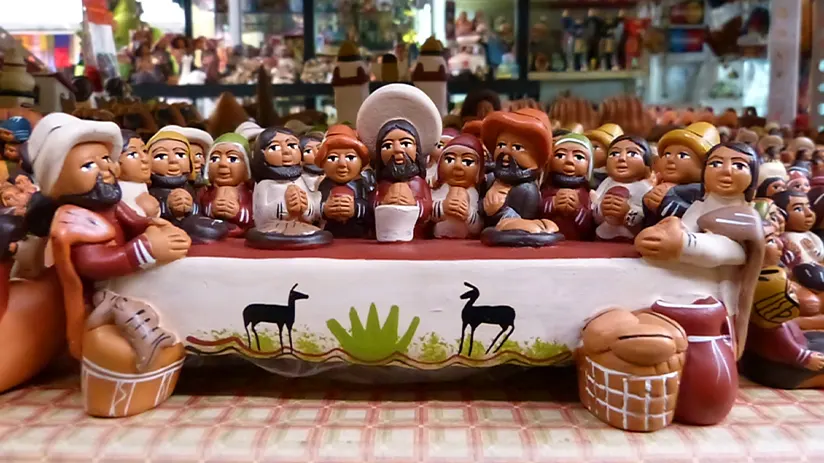After a dream trip, many travelers want to buy gifts for themselves or a loved one. The typical local items they buy evoke memories of their wonderful trip and bring back unforgettable memories. If you’re packing for a trip to Peru, save space for various Peruvian souvenirs.
During your journey through this magnificent destination, you’ll find various colorful markets offering beautiful handicrafts and items. The Machu Travel Peru team wants to share this beautiful country’s best traditional souvenirs. Consequently, you can return with fun, unique, and colorful objects on your next voyage.
All about the best souvenirs from Peru to take home with you
- Alpaca clothing
- Keepsake textiles
- Peruvian dolls
- Chullos
- Memorial backpacks
- Paintings
- Traditional instruments
- Products and Peruvian spirits
- The Chacana and Peruvian Jewelry
- Coca candies
- Other traditional Handmade art
Alpaca clothing
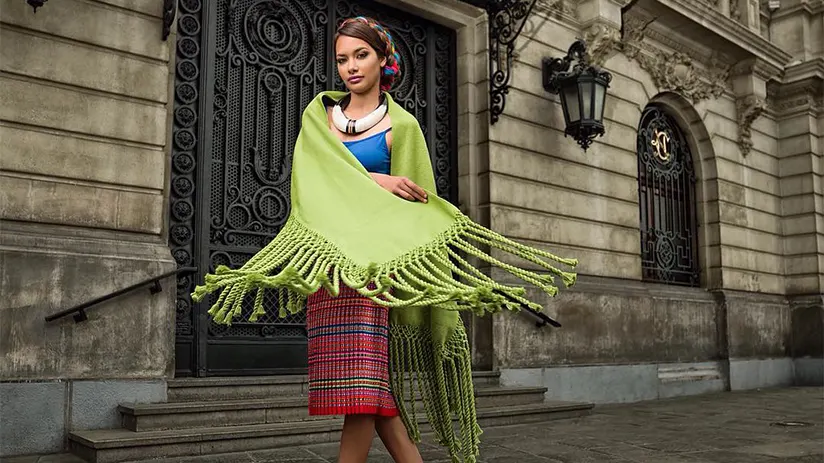
According to leading fashion houses, alpaca fiber is one of the finest and most exclusive in the world. Its lightweight, hypoallergenic, and thermoregulating fabric makes it one of the best souvenirs from Peru. The blend of traditional and modern designs reflects the rich Andean culture in each garment.
Within the wide range of this fabric, highlight the baby alpaca fabric, which is the first and finest shearing of the alpaca. Although garments made with this product tend to be expensive, they’re entirely worth it. Moreover, many artisans work hard to create these clothes that captivate thousands worldwide.
We recommend shopping for this unique souvenir in specialized stores to avoid scams. Kuna, Paka, and Sol Alpaca are among the most recognized Alpaca Clothing Brands. Finding specialized alpaca shops is relatively easy in Cusco, especially in its historic center and main streets. Furthermore, it’s worth noting that these stores work directly with alpaca producers and breeders from various parts of Peru.
Keepsake textiles
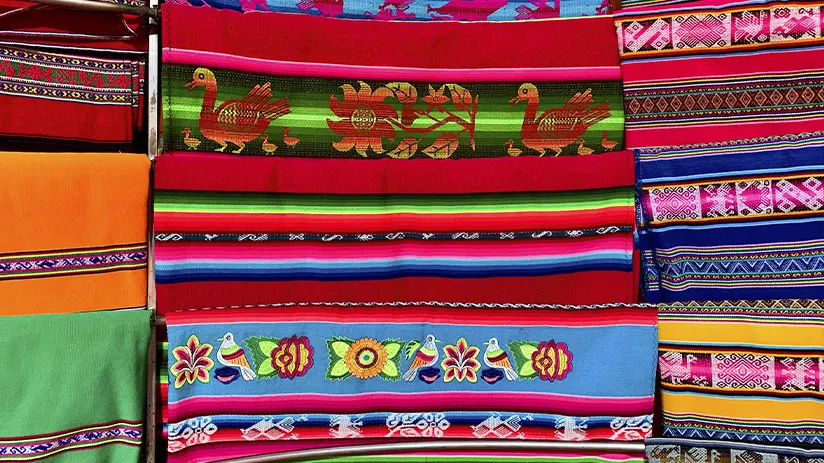
Peruvian textiles are beautiful works of art that reflect extraordinary events, fragments of history, and its vast cultural diversity. Therefore, it is clear that they have become one of the best Andean souvenirs. During your trip, you can find vibrantly colored pillowcases, tapestries, hats, gloves, rugs, backpacks, pencil cases, and more textiles.
You can visit two of the most renowned Andean textile shops in the Cusco Sacred Valley of the Incas. Mosqoy Textils and Awamaki in Ollantaytambo sell handcrafted products from Andean women from the region. Marketing their handicrafts supports the local economy, particularly its rich cultural heritage.
Peruvian dolls
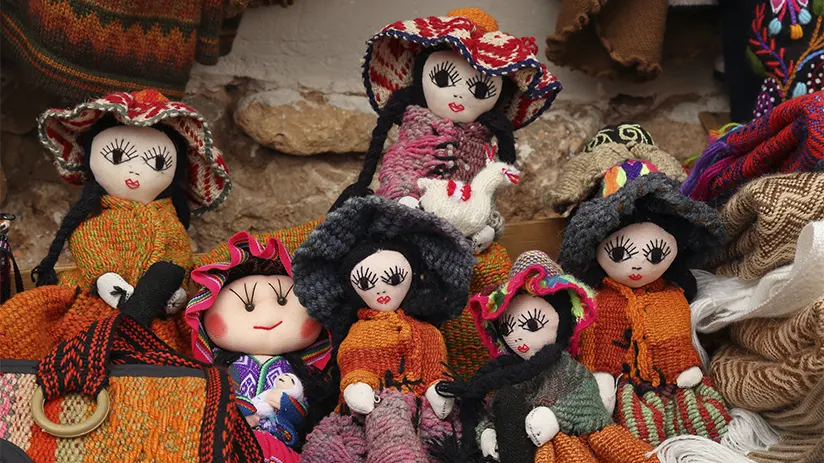
Peruvian dolls are a great gift, reflecting the country’s vast cultural diversity. Andean master artisans craft alpaca, llama, and vicuña dolls with wool and lots to represent their traditions and customs. They also made handicrafts that reflected Andean inhabitants, both men and women. You can find these souvenirs in many artisan stores, especially the Pisac Artisan Market in Cusco.
Cholitas dolls capture the beauty and grace of Peruvian women. Just in case, “Cholitas” is the affectionate term for women from the Peruvian Andes. Therefore, dare to bring beauty and affection to your loved ones from the highly diverse country; bring them Peruvian dolls!
Chullos
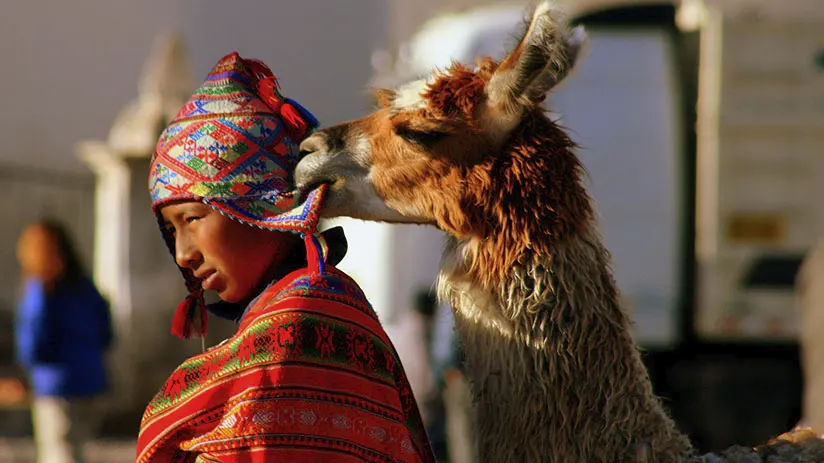
The chullo is a traditional Andean hat with ear flaps to tie under your chin. This item stands out in Peruvian art for having a distinctive little ball tied to the top of the head. Andean artisans made them from alpaca, llama, or vicuña wool and decorated them with colorful prints.
These distinctive garments are most visible in places like Cusco, Arequipa, and Puno, where the climate is colder. Since ancient times, the Incas wore them in the colder mountainous regions; today, it is an unparalleled cultural expression. We recommend the traditional markets, especially the San Pedro Market, to buy these adorable garments.
Memorial backpacks
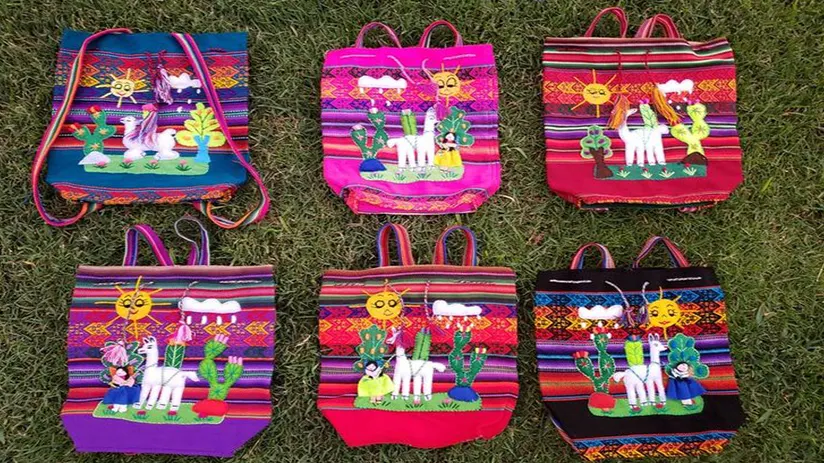
Andean backpacks are among the most popular Peruvian souvenirs purchased by tourists to its use. You can find various models in specialty shops and craft markets. Andean and Inca patterns are essential in the designs, making them eye-catching to anyone interested. Some artisans make these attractive objects with llama and alpaca wool, giving them a sophisticated and luxurious touch.
Paintings
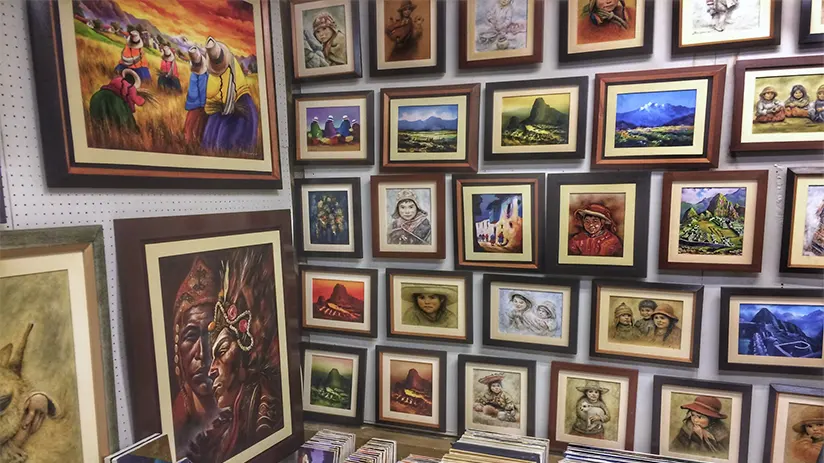
Peru offers views and landscapes that are both different and unique. If seeing the Coast, Sierra, and Amazon through a photo is a privilege, imagine these through a painting! A brush can reflect a bit of the majestic mountains, exotic forests, beautiful beaches, and many other Peruvian places.
The most recommended option for buying pictures in Cusco is San Blas, the city’s traditional artisan neighborhood. Many families of Cusquenian artisans live there and sell their paintings in their homes’ stores. The master artisans hand down their unique painting styles from generation to generation.
Traditional instruments
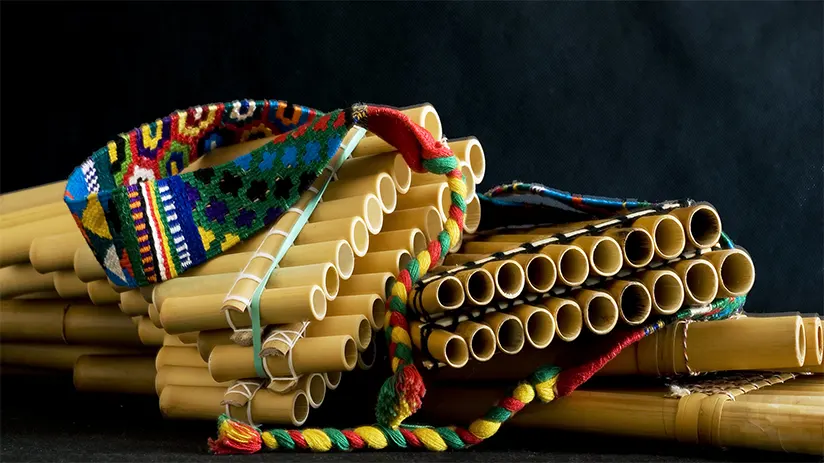
Many people recognize Peruvian music as beautiful because of its many cultural influences. If you love it, consider bringing a musical instrument as a souvenir from Peru. You will have an extensive repertoire of options, from handcrafted wooden flutes to a ten-string Charangon.
Musical instruments are one of the few souvenirs that are not at a glance in any handicraft center. You will have to look for stores that specialize in Andean musical instruments to buy them. Fortunately, these music stores are close to the handicraft market.
Products and Peruvian spirits
Many people recognize Peru as a must-see gastronomic destination. Chefs create a wide variety of dishes with top-quality products, many native to the country. If you’re passionate about cooking, you can take home some of Peru’s most-known products at the end of your trip to Peru. Below, we share the best Peruvian products to take home after your trip.
Pisco
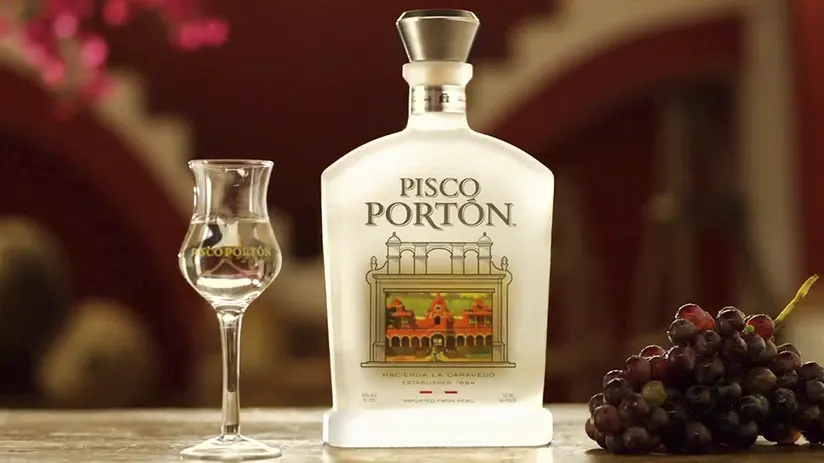
The Pisco Sour is one of the most traditional and popular cocktails in the Andean Country. Many famous expert tasters recognize the Peruvian Pisco for its quality and unique flavor. As the Peruvian wine, you’ll only find this emblem in Peru, so don’t miss the opportunity to bring it. A friend, family member, or loved one will be delighted to receive this delightful and memorable souvenir.
Coffee
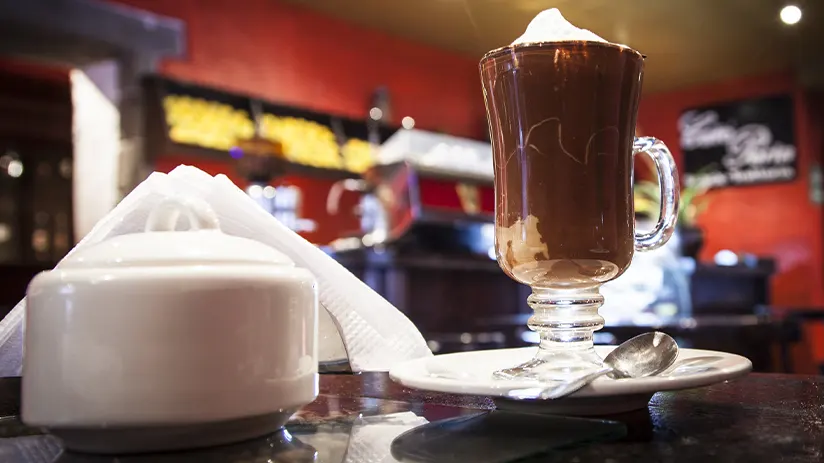
When shopping in Peru, remember to bring coffee, one of the highest-quality products in the world. Peruvian farmers produce coffee over 1,189 meters above sea level, an ideal and privileged location. In many traditional markets, you can sample Peru’s great coffee diversity. Cusco has many specialty coffee shops; if you’re doing souvenir shopping, we recommend visiting Cocla or Misky shops.
Pink salt of maras
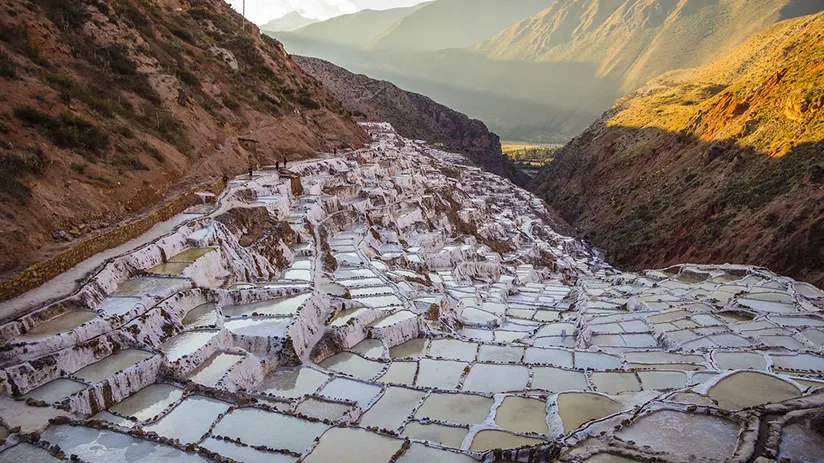
Pink salt, or Sal de Maras, is a signature of Maras, a town with the largest salt mines in Peru. Pink salt is a must-have souvenir on your journey to the Sacred Valley in Cusco. This Peruvian product is excellent as a finishing touch for grills and meats. You can purchase it in any supermarket in Peru; however, we recommend buying it in Moray.
Peruvian Chocolate
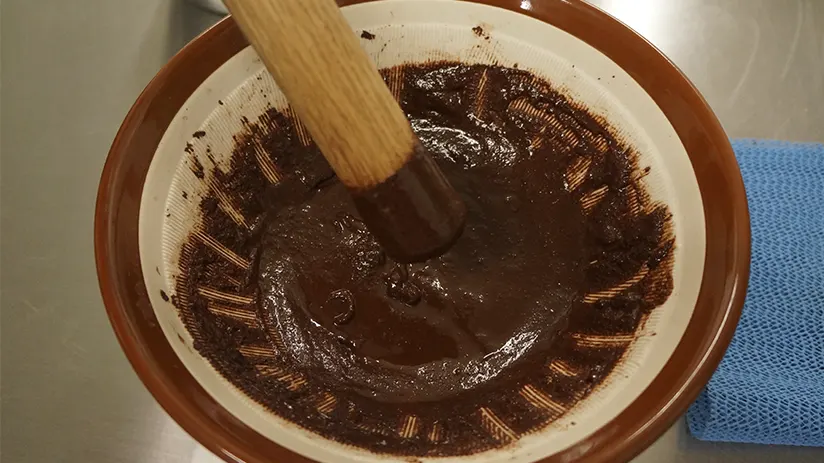
Peruvian chocolate is an excellent option to buy in Peru. For generations, many farmers who also produce coffee have grown cacao, the essential product for making chocolate. Chuncho cacao chocolate is a flagship product among various Peruvian chocolates. You can find this sweet product in many markets, although we recommend the Chocomuseo if you visit Cusco.
Caña Alta & Matacuy
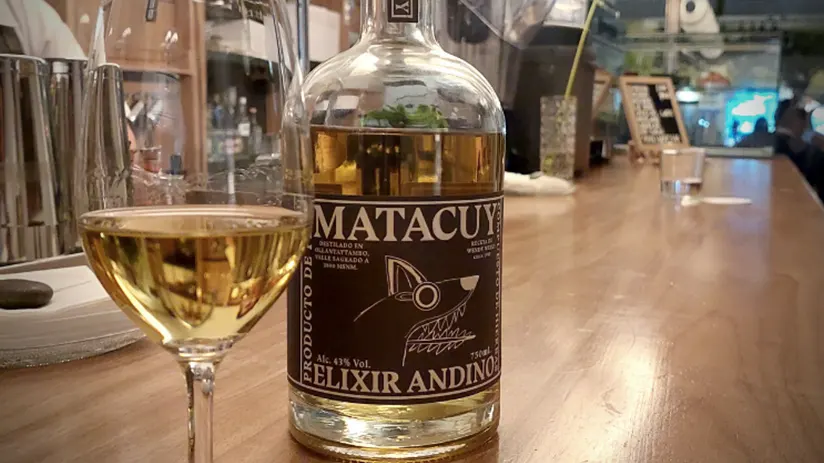
Matacuy is an Andean elixir made with freshly harvested herbs and sugarcane from Cusco and Apurimac. Its name comes from the phrase “kill the guinea pig” because many Andean communities consider it a traditional digestive. Generations have used the traditional recipe to make Matacuy, turning it into an ancient and cultural souvenir.
The Chacana and Peruvian jewelry
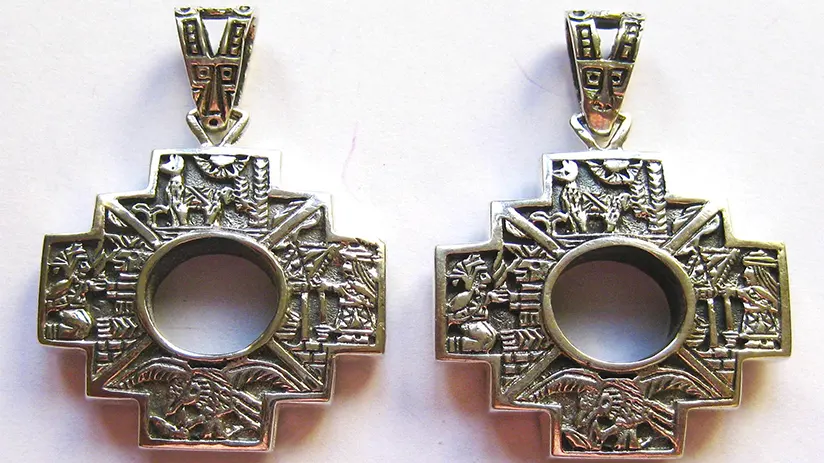
Peruvian jewelry is not just a souvenir; it’s an expression of history, tradition, and culture. You can appreciate beautiful gold and silver pieces that express Inca icons and symbols. Among the most notable pieces is the Chacana, or Inca cross, an important symbol for the Inca people. Over the years, many artisans have created various designs and models, undoubtedly a perfect souvenir to commemorate your journey.
Coca candies
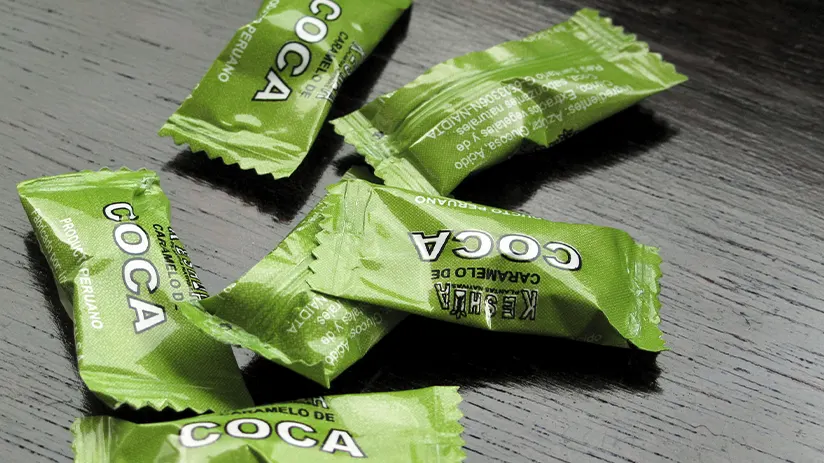
Traditionally, coca is a product used for energy. Some alternative uses include chewing it for altitude sickness and relieving hunger and fatigue. Although international laws prohibit the export of coca, there are alternatives, the most notable being coca candy. This sweet treat will help you immerse yourself in Andean customs and traditions.
Other traditional handmade art
Ekeko and handmade art
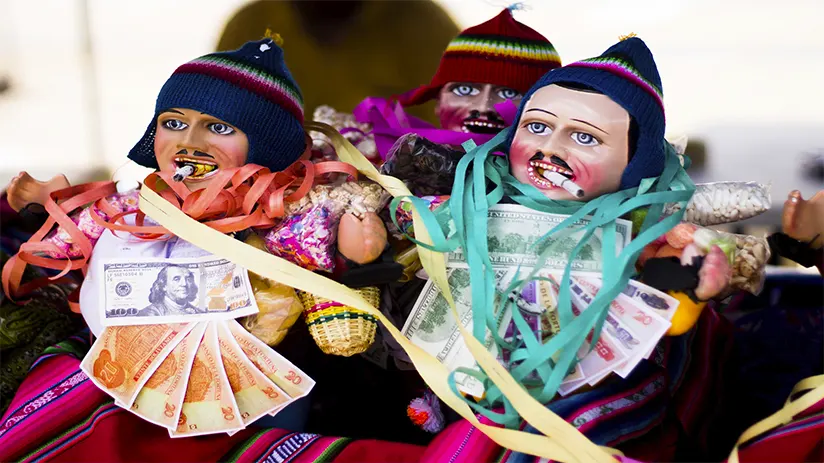
In various Peruvian art galleries and exhibitions, you can find the representation of the Ekeko, a contemporary Andean god. The god’s representative figures wear various traditional costumes. Other elements include banknotes, food, and many aspects of the culture. Interested travelers can purchase them in many artisan markets in Peru’s central highlands, such as Huancayo.
Retablos altar of Ayacucho
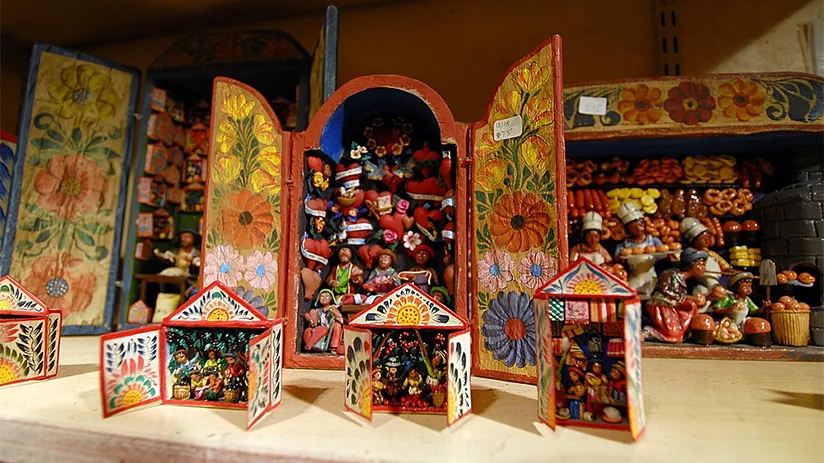
Retablos are wooden cabinets with beautiful flowers and roses from the Ayacucho, a picturesque Peruvian town. Many traditional artisans use hand-carving techniques to create retablos of various sizes. You can find these picturesque souvenirs across multiple craft markets, but Ayacucho is the perfect place to find them.
Toritos de Pucara (Pucara bulls)
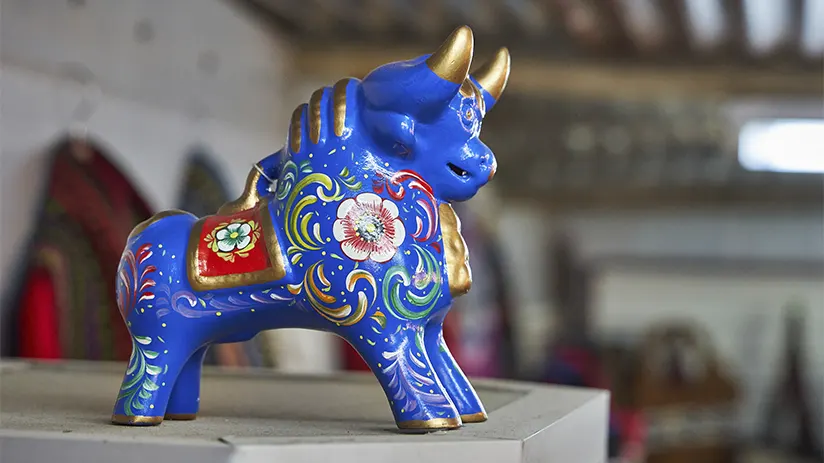
Pucará bull is a symbol of Juliaca, one of the most important cities in the Peruvian Altiplano. According to some traditional beliefs, these crafts protect the home from evil spirits. Therefore, many people give them in pairs to newlywed couples to wish them prosperity and luck. Andean artisans sell them in different sizes and colors so you can purchase them according to your preference.
“A PHOTOGRAPH IS A SOUVENIR OF A MEMORY, IT IS NOT A MOMENT. WHEN YOU LOOK AT THE PHOTOGRAPH THAT BECOMES THE MOMENT, YOUR OWN MOMENT”
With a wide range of unique and unparalleled options, shopping in Peru is an experience like no other. The Machu Travel Peru team shared some of the best souvenirs to return to this cultural wonder on your next trip. These are just a few examples of what you can find; markets to visit in Lima and other cities have many kinds of souvenirs. We hope this blog has been helpful; for more information, don’t hesitate to reach.
Peru has so much to offer, it can be hard to know where to start. With many years of experience in the tourism sector, Machu Travel Peru is happy to help with anything regarding your trip to Machu Picchu and any tours around it. Make your Machu Picchu experience an unforgettable one!
